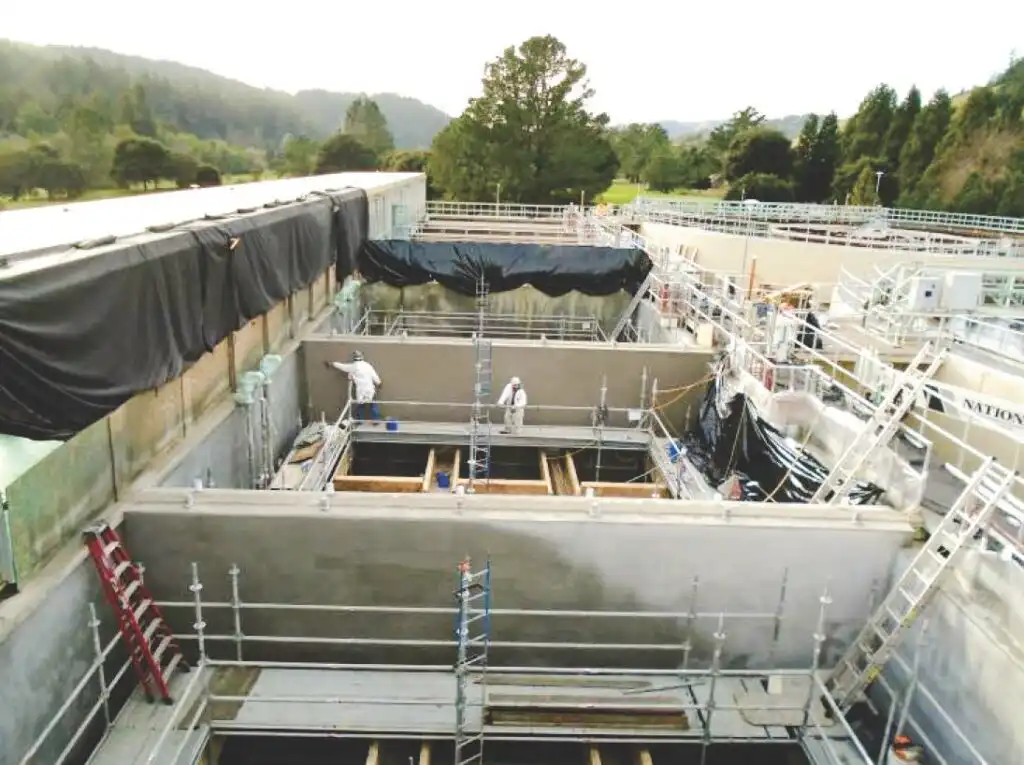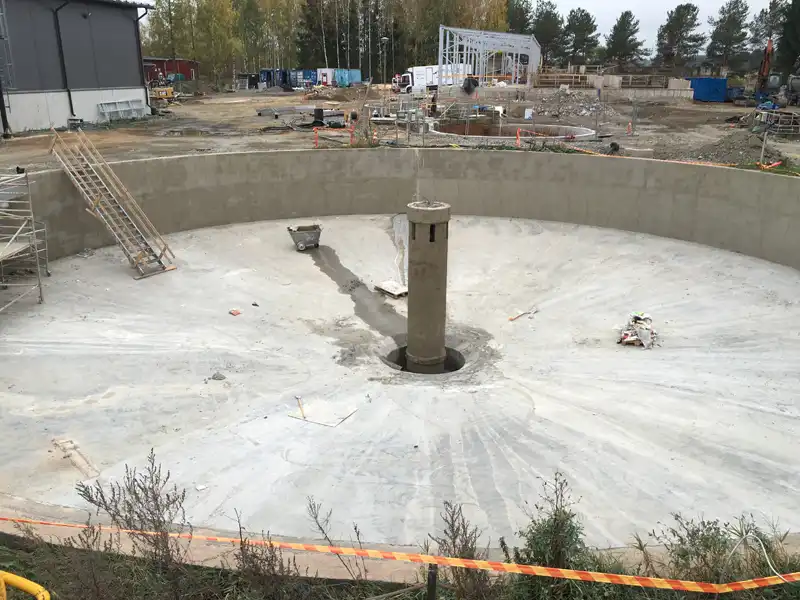The cementitious waterproof coating can be described as two-component breathable, seamless coatings used to provide positive and negative side waterproofing protection on concrete and masonry surfaces. They prevent damage from water infiltration and resist mold and mildew. It is used behind the tile, over masonry patching, and concrete surfaces. These above and below-grade waterproofing coatings have a good affinity to concrete and masonry substrates due to their cementitious nature, and thus strong bonding strength. This coating protects from the effects of aggressive acid gases, moisture and chlorides and also resists chemical attacks on the concrete or other substrates.
They’re readily available from suppliers of masonry products, and they’re easy to mix and apply. The cementitious coating protects concrete in sulfate contaminated ground conditions. The cementitious coating is useful for internal and external structural waterproofing of concrete and other mineral substrates. It is also useful for underground structures as well as roofs and decks. The cementitious coating can protect highways and coastal structures from a chlorides environment and enhance the durability of reinforced concrete.
Advantages of cementitious waterproof coating
Cementitious waterproof coating types are two-component blends. Cementitious waterproofing method is used for substrate control movement. Some of its advantages are-
- It is easy to apply and it is available at any hardware store or masonry supply shops.
- These coatings are handled similarly to cement, mix it in with water until it achieves the right consistency and can be applied using a stiff-bristled brush.
- It is seamless and adds to the aesthetic quality of the structure it’s applied to.
- It is chemical resistant as well as abrasion and weather resistant including frost.
- It is good at bonding porous and non-porous surfaces, as well as old and new concrete.
- Improves the watertightness of water-containing concrete tanks, reservoirs, and clearwells.
- Protects against water penetration, yet water vapor permeable (breathable).
- Excellent freeze/thaw resistance.
- Good adhesion to sound, prepared substrates.
- Easy and fast mixing and application.
- Good abrasion resistance.
- Can be mixed to slurry or trowelable consistency.
- Improves concrete/masonry appearance.
Different types of cementitious waterproof products
- Two-component polymer modified cementitious coating.- It is a two-component modified acrylic polymer-based cementitious waterproofing coating system, which on mixing and hardening provides an excellent water-resistant barrier. It offers excellent resistance to both positive and negative pressures. It resists positive and negative pressure under 100m head in water retaining and below ground structures as well as roofs and decks.
- Cementitious Waterproofing Slurry –It is a two-part and polymer modified cementitious waterproofing slurry to waterproof concrete and masonry. It comprises a liquid polymer and a cement base mix incorporating special additives.
- Rapid-Setting Hydraulic Cement- It is a rapid-setting hydraulic cement compound used to instantly stop running water or seepage in masonry or concrete. It is ready to use and requires only the addition of water before plugging and sealing active leaks.
- Cementitious Waterproof Plugging Compound- It is a ready-mixed, rapid setting compound to stop water and moisture ingress. The product can be used internally or externally as a waterproof plugging mortar or where rapid setting and early strength gain is required.
The application method of cementitious waterproof coating

- Surface preparation needs to be done correctly
- The surface should be free from mill scale, oil, grease and other chemical contaminants
- Manufacturers typically require concrete surfaces to be acid-etched, lightly sand-blasted, or bush-hammered
- Cementitious systems do not require priming of a substrate before application
- The surface must be smoothed by sandblasting and the coating should be applied without delay after surface preparation
- Typically, cementitious systems are applied in two coats after the initial preparatory work is complete. First coats may be proprietary materials only. Second coats are usually the chemical or metallic materials within a cement-and-sand mixture.
- An intercoat can be used if adhesion is lacking between the substrate and the coating
- The coating is applied with various methods such as casting, troweling or spraying
- A 2-in concrete topping, carpet, tile, or other finish is applied over the membrane
- A wet cure of 24–48 hours is then awaited
Cementitious Waterproofing Application Areas:










River Locks/Channels & Concrete Dykes
Image source – Newton waterproofing, Donnie O’ corner, wrmeadows.com, koster.eu, waterdamagerestorations.org, sika.com, buildingenclosureonline.com, marineinsight.com, news.stanford.edu, master-builders-solutions.com, southwestradon.com



